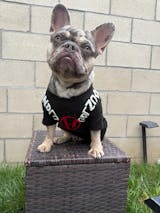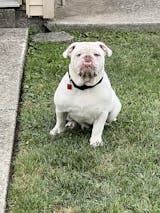Should I Let My Dog Sleep in the Bed With Me?
There is no one answer to the question of whether or not dogs should sleep in their owner's bed. Some people feel very strongly that their dogs should not be allowed on the bed, while others believe that it is perfectly fine. In fact, the debate is split down the middle. In a recent survey, about half of the respondents said their dog slept in the bed with them. In this article, we will share the good, the bad, and the ugly of co-sleeping with your dog.

The Good
There are many benefits to co-sleeping with your dog. Some of these benefits include increased feelings of safety and security, decreased anxiety and stress levels, and improved bonding. Additionally, dogs can provide warmth and comfort on cold nights.
On the dog side of the equation, if they experience separation anxiety or have other behavioral issues, sleeping in their owner's bed may be very beneficial for them. Sleeping in your bed may help to ease their anxiety and make them feel more comfortable.
The Bad
On the other hand, there are a few drawbacks to allowing your dog to sleep in the bed with you. For example, the quality of sleep can be affected. Owners who share a bed with their dog often report not sleeping as well as those whose dogs sleep elsewhere. There are several reasons sleep is often disturbed when co-sleeping. First, dogs remain vigilant for sounds even while sleeping. This may make them lighter sleepers and cause them to move more or alert to noises. Additionally, dog and human sleep cycles are different. Dogs are polyphasic sleepers. This means they have more than 2 sleep cycles and their rest is spread out over multiple sleeping periods in a day. Humans on the other hand, are monophasic sleepers and only have one period of sleeping in a 24-hour period.
The Ugly
Finally, one of the most common reasons people don't want to co-sleep with their dog is due to the difficulty in keeping their bed clean. Dogs often shed hair and bring dirt and debris into the house and subsequently into the bed.
Wrinkly dogs such as English Bulldogs, French Bulldogs, and Pugs, in particular, are prone to getting dirt and debris stuck in their folds and wrinkles which can end up in the bed. They also may have yeast and other bacteria in those folds which can make them pretty stinky bed companions.
Tips for Successful Co-Sleeping
Many dog owners feel the pros outweigh the cons and ultimately make the decision to allow their dog to sleep in the bed with them. If you want to give it a try, there are a few things to consider. First, make sure that your dog is well-trained and housebroken. Second, be prepared for not getting as much sleep when you first start sharing the bed with your dog. Finally, take measures to keep your dog clean particularly between their folds and wrinkles so that you can avoid dirt and debris from ending up in your bed.
Squishface Wrinkle Wipes make it easy to keep your dog clean between baths. These wipes keep your pup clean and fresh-smelling. Use these dog wrinkle wipes on any place your pup needs to be cleaned – wrinkles, tail pockets, paws and toes, faces, tear stains, girly dog bits (the vulva), and puppy bums!
After using Wrinkle Wipes, follow up with Squishface Wrinkle Paste. Our Wrinkle Paste forms a water-repellent barrier on the skin surface which protects against moisture, yeast, fungus, and other bacteria, and keeps those bad odors away.
The Bottom Line
Overall, sleeping with your dog can provide many benefits to both you and your pet. However, it’s important to be mindful of the potential drawbacks and take steps to mitigate them. By following these tips, you can enjoy all the perks that come with sharing a bed with your furry friend while minimizing any negative consequences.
For more great tips and information and all things Squishface, check out our blog every week.










